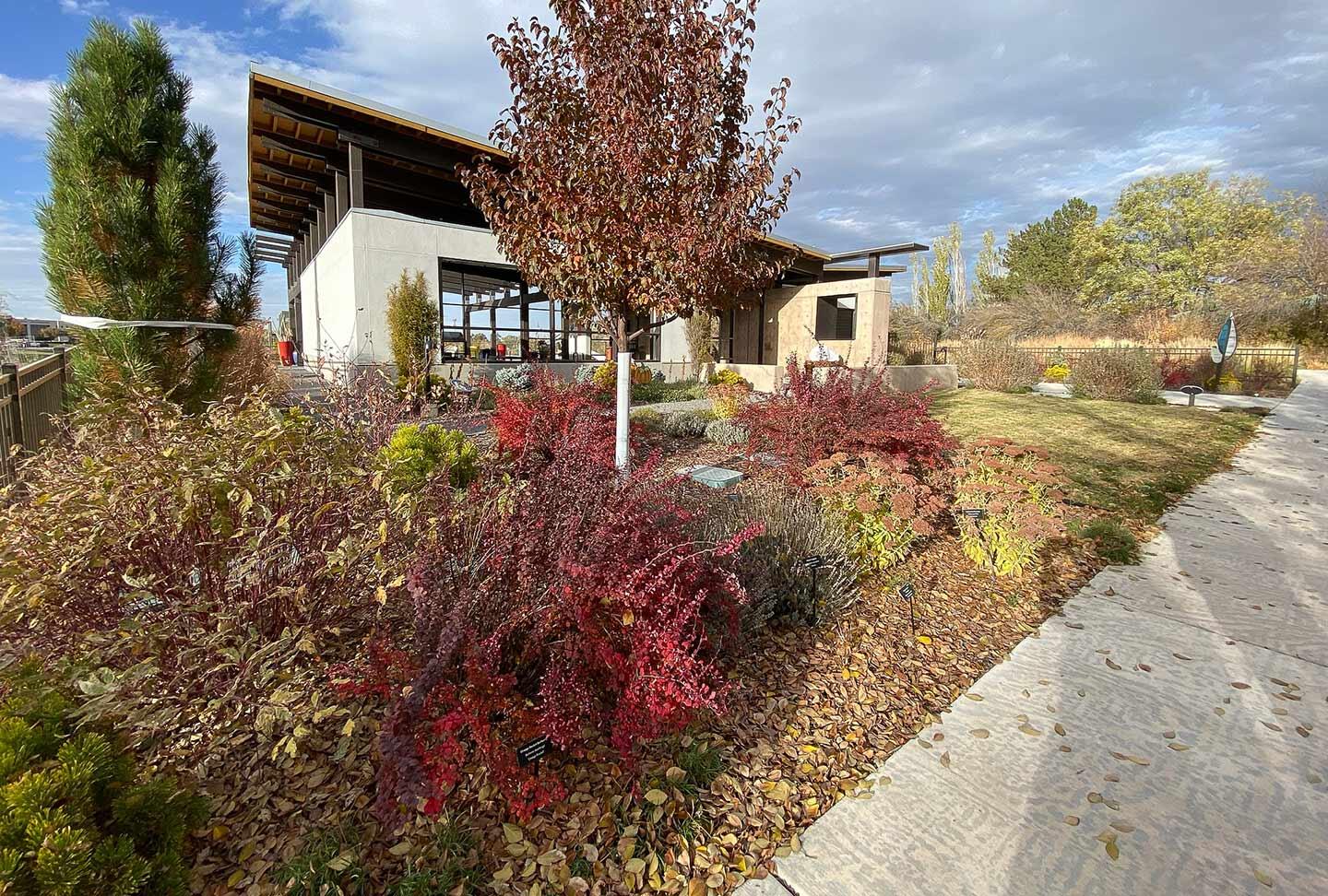Leaves are dropping. Flowers are fading. The mountains have been dusted with snow. Fall has arrived in the Rocky Mountain region, and it’s a great time to explore ways to help birds over winter.
Let’s say you’ve heard you should take it easy on fall yard tasks, but you need to start slow.
Maybe you live in a neighborhood where people vacuum up every leaf and stem in the fall. Or, you have a partner who grew up where tidy winter yards were the norm. Or, you’re new to having a bird-friendly yard.
Are there simple ways to get started?
Yes, and good news, bird-friendly landscapes and a little tidiness don’t have to be mutually exclusive.
“Humans prefer order. It makes us feel comfortable,” explains Deryn Davidson, the sustainable landscape state specialist for Colorado State University Extension. “But naturalistic landscapes don’t have to be chaotic or messy. You can work subtle design elements in to show your landscape is intentional.”
Here are five ways to get started:
1. Leave your ornamental grasses standing over winter (particularly your native grasses).

Many people chop their ornamental grasses to the ground in the fall, leaving lowly stumps. It’s a missed opportunity for winter curb appeal and helping birds!
Leaving ornamental grasses until spring can make your winter landscape more interesting. Plus, many native grasses serve as restaurants and hotels for overwintering birds and insects. Birds feed on grass seeds and take shelter among the clumps. Some butterflies and beneficial insects will overwinter in grasses as eggs, larvae, pupae, or adults.

If you’d like to add a bird-friendly grass next season, check out little bluestem (Schizachyrium scoparium). It’s native to many parts of Colorado, Utah, and Wyoming. It has an upright growth habit and attractive winter colors. Small birds—like rosy-finches, juncos, and American Tree Sparrows—feed on its seeds over winter. Some birds use it as a nesting and roosting habitat. And it’s a larval host for several types of skipper butterflies.

2. Strategically move leaves into certain garden beds or the back of your yard.
You’ll help protect overwintering insects—an important food source for birds next season. Plus, you’ll create a place for birds to forage for food.
Our big temperature swings are “radically challenging for insects, particularly in the back end of winter,” says Dr. Whitney Cranshaw, a western entomologist. Creating winter insulation for insects is extremely important for their survival in Colorado, Wyoming, and Utah.
If you’re just getting started, rake leaves into your tree and shrub beds, or make a small pile of insulating leaves in a back corner of your yard. (Just avoid thick piles on your lawn.)
“The more areas of insulation you can provide, the better,” Dr. Cranshaw adds, “but anything is better than nothing.”

3. Identify shrubs and trees for your yard—and add them next season.
Shrubs and trees are the backbone of a beautiful winter landscape. They add structure for humans (Order! Beauty!), but they also can shelter and feed birds (Seedpods! Fruit!) during our western winters.
Fall and winter are great times to identify shrubs and trees you like because they aren’t overshadowed by perennials.
Need inspiration? Conifers and native woody plants like oak (Quercus sp.), hardy manzanita (Arctostaphylos x coloradensis) and kinnickinnick (Arctostaphylos uva-ursi), and dwarf rabbitbrush (Ericameria nauseosa var. nauseosa) offer benefits for birds and have winter curb appeal.
Many western nurseries get their big shipments of woody plants in the early spring, so plan now to be ready.

4. Leave some perennials standing over winter.
Wondering which plants to leave standing?
Keep perennials that hold onto their foliage through winter. You’ll get a fourth season of interest! These plants include seasonal hummingbird favorites like:
- Beardtongue (Penstemon)
- Sandia coral bells (Heuchera pulchella)
- Mojave sage (Salvia pachyphylla)

Don’t cut back perennials that are rich with seeds for overwintering birds—plants like:
- Purple coneflower (Echinacea)
- Black-eyed susan (Rudbeckia hirta)
- Gayfeather (Liatris)

Avoid trimming back “marginally hardy” perennials. These plants are more likely to survive winter when you wait until spring to cut them back. These perennials include seasonal hummingbird plants like:
- Hyssop (Agastache)
- Western salvia (Salvia greggii, Salvia darcyi, and similar species)

5. Clean up some parts of your yard… but not others.
To show intention, you may want to clean up the edges of your front yard—along your driveway, walkways, and sidewalks—but leave the middle and back parts of your gardens untouched. Another option: Tidy up your front yard but leave your backyard in a more natural state over winter.
As you get more comfortable with bird-friendly yard care and build buy-in from your community, add in more natural areas. Soon, you’ll be inspiring others to join you!
When it comes to western yard care, there is no one-size-fits-all approach. Do what works best for where you live. If you live in a wildland-urban interface, you should consider firewise practices, too.









